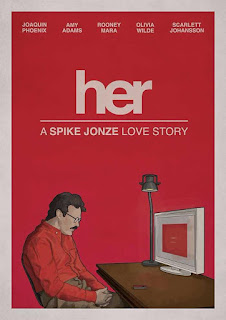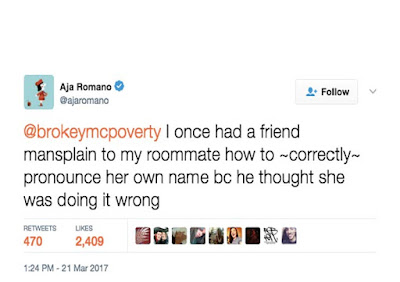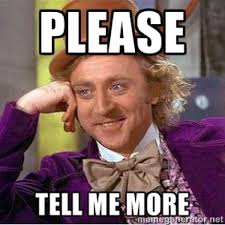This Blog Was Written By Darren Rangel
#ArtificialLivesMatter
Will there ever be a time in which we become too dependent on technology for basic human interaction? We already see an increase in social anxiety disorders and a cultural increase in favoritism towards the non-verbal forms of communication (texting, instant messaging, email etc) Should we be concerned with this seemingly irreversible trend to distance ourselves from ‘real’ human interaction? Can technology one day ‘understand’ and predict the ‘perfect’ response for any given dialogue?

We are all familiar with Google Translate, but how much do you really know about the underlyings of the software? Did you know that it implements a method known as Deep learning? Deep Learning is a process of imitation which occurs within the data processing of A.I. The numerous layers of neural networks provides an intricate and extensive method of organization, archival and retrieval. The large amounts of data in these networks is processed and matched with an algorithm which helps the computer learn how to recognize words and sentences. Google has already implemented this in a great number of its applications and services such as Google Cloud Video and Google Assistant Speech Recognition.
Deep learning is also very closely related to Neural Machine Translation, another form of A.I. that uses patterns to become progressively accurate. This accuracy can be attributed to the millions of documents that have already undergone the translation process by humans. Google computers scan the documents in search for statistically significant patterns. These patterns contribute to the entire correction process of other documents. This in turn makes the computer program highly informative of how humans use language.
Do you consider Google’s Artificial Intelligence to be a threat or assistance to communication and translation? In the 2013 Drama film, Her; a man falls in love with his highly sophisticated operating system and begins to prefer it to real people. Will we ever see such a mass preference to technology in our lifetime? Does it already exist?
Looking Ahead
 |
|
Space Meme, Tim & Eric
|
A pessimistic thought a day.. keeps the ridiculous away?
I believe that A.I. will become integrated with humanity in an irreversible manner. In one of my short stories, (I’m not supposed to be talking about this) I explore the pros and cons of a cyborg dependant humanity. Beyond the physical reliance of tech, there is also the social communicative “disturbance” that occurs when beings are segregated by IQ and other tasty prejudices and influences. Most of the dependance I focus on is on the industry and consumer. As a pessimist, I must confess, that the notion of our own technological progression outgrowing us is quite satisfying.
So, this pretty much means that we’ll see an increase in the outlawing of things like manual driving, high risk decision making – leading to the gradual removal of world leaders. The integration of the biological and technological is what blurs the line and allows the political landscape to shift over the course of hundreds of years. In my world, the future human population is dependent on technologies that keep them alive. People live beyond what they do in today’s reality. Because the government has control of larger corporations that manufacture, let’s say… eye replacements, the population is succumb to upgrading its outdated hardware.
So, now back to non-fiction
What kinds of A.I. do we have today & what may we expect in the future.
 |
|
Hal 9000, 2001 A Space Odyssey (1968)
|
Here they are, 4 types of A.I. that we should be conscious of.
1. REACTIVE – This is the most basic type of A.I. system which is purely reactive. It does not have the ability to form memories or use such past experiences to influence new decisions. Real world example, meet “Deep Blue”, IBM’s chess playing supercomputer whois known for being the first system to win a chess match against a reigning world champion, mind you. #ArtificalMindsMatter This is cool because Deep Blue can make predictions and chose optimal movements from among a vast number of possibilities. These possibilities are not created from a vault of “memory” or experiences. Deep Blue ignores everything before the present moment and makes decisions based on the current state of the chess pieces. Blue does not rely on an internal concept of reality, it acts on what it perceives.
2. LIMITED MEMORY – These machines are in deed capable of looking into the past. Prime example: Self-driving cars, Chatbots. Yeah, I’m looking at you Google. But how? Through the observation of other cars and identification of specific objects over time, of course! This data is added to the cars A.I. preprogrammed representation of the world. It includes, traffic lights, road curvatures and lane markings.
3. THEORY OF MIND

These are the ones that initiate Armageddon, oops I meant “ initiate World Peace”. These machines encompass what we think of as “the next, more advanced class” capable of not only forming representations of the world, but also of other facets of life. In psychology this is describes as the Theory of Mind. (ToM) is the ability to attribute mental states, desires, beliefs to oneself and others. We are dealing with a system that may very well be able to develop its own, more proficient lifestyle. Not only will it be able to determine its own agenda, but also more intricately understand that people and objects in the world have their own emotions and intentions. This has a ton to do with social interaction because it is the introduction of a new entity which in many ways can surpass us. In the future we will probably have to consider the impact smart technology has on a more intimate level. The dynamic of communication could be brought into new territories and that is very exciting. Real world example: Nah, not yet but we do see them in cinema and literature. (Sonny from iRobot & R2-D2 in Star Wars)
4. SELF AWARENESS
 |
|
Agent Smith, The Matrix (1999)
|
Lastly is the self aware A.I. the “Theory of Mind” elevated to the furthest conscious and internal states of understanding which extend beyond the self. Self aware technology can predict and assume feelings and motives of alternative persons and entities.
So, what do you think?
Should we be concerned with tech becoming sentient and making us a human workforce or will we be able to laugh at Siri for centuries to come.









































